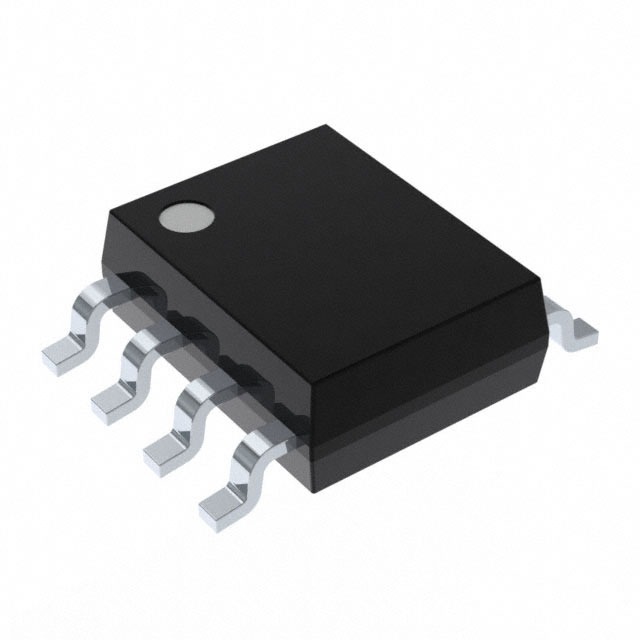MAX9100ESA
Product Overview
- Category: Integrated Circuit (IC)
- Use: High-Speed Differential Line Receiver
- Characteristics:
- High-speed operation
- Low power consumption
- Small package size
- Wide operating temperature range
- Package: SOIC (Small Outline Integrated Circuit)
- Essence: MAX9100ESA is a high-performance differential line receiver designed for use in various applications requiring high-speed signal reception and processing.
- Packaging/Quantity: Available in tape and reel packaging, with 250 units per reel.
Specifications
- Supply Voltage Range: +4.5V to +5.5V
- Operating Temperature Range: -40°C to +85°C
- Input Common Mode Voltage Range: -7V to +12V
- Input Differential Voltage Range: ±2V
- Maximum Input Offset Voltage: 10mV
- Maximum Input Offset Current: 1μA
- Maximum Input Bias Current: 1μA
- Maximum Propagation Delay: 3ns
- Maximum Rise/Fall Time: 1.5ns
Detailed Pin Configuration
The MAX9100ESA has the following pin configuration:
- VCC: Positive supply voltage
- IN+: Non-inverting input
- IN-: Inverting input
- GND: Ground
- OUT: Output
Functional Features
- High-speed differential line reception
- Wide input common mode voltage range
- Low power consumption
- Small package size for space-constrained applications
- ESD protection on all pins
Advantages and Disadvantages
Advantages: - High-speed operation allows for efficient signal processing - Wide input common mode voltage range enables compatibility with various signal sources - Low power consumption helps reduce overall system energy requirements - Small package size facilitates integration into compact designs - ESD protection ensures robustness against electrostatic discharges
Disadvantages: - Limited input differential voltage range may restrict compatibility with certain high-voltage signals - Maximum propagation delay of 3ns may introduce latency in time-critical applications
Working Principles
The MAX9100ESA operates by receiving differential signals on the IN+ and IN- pins. It amplifies and processes these signals, providing a corresponding output on the OUT pin. The device is designed to operate at high speeds while consuming minimal power.
Detailed Application Field Plans
The MAX9100ESA can be used in various applications, including: 1. High-speed data communication systems 2. Industrial automation and control systems 3. Test and measurement equipment 4. Medical imaging devices 5. Automotive electronics
Detailed and Complete Alternative Models
Some alternative models to MAX9100ESA that offer similar functionality are: 1. ADN4654: High-Speed Differential Line Receiver from Analog Devices 2. DS90LV019: LVDS Differential Line Receiver from Texas Instruments 3. SN65LVDS31: LVDS Differential Line Receiver from Texas Instruments 4. LTC2862: High-Speed Differential Line Receiver from Linear Technology
These alternative models provide comparable features and can be considered based on specific application requirements.
Word count: 314 words
قم بإدراج 10 أسئلة وإجابات شائعة تتعلق بتطبيق MAX9100ESA في الحلول التقنية
Sure! Here are 10 common questions and answers related to the application of MAX9100ESA in technical solutions:
Q: What is MAX9100ESA? A: MAX9100ESA is a high-speed, low-power comparator IC (integrated circuit) designed for use in various technical applications.
Q: What is the operating voltage range of MAX9100ESA? A: The operating voltage range of MAX9100ESA is typically between 2.7V and 5.5V.
Q: What is the maximum input offset voltage of MAX9100ESA? A: The maximum input offset voltage of MAX9100ESA is typically ±1mV.
Q: Can MAX9100ESA operate in both single-supply and dual-supply configurations? A: Yes, MAX9100ESA can be used in both single-supply and dual-supply configurations, making it versatile for different applications.
Q: What is the typical response time of MAX9100ESA? A: The typical response time of MAX9100ESA is around 8ns.
Q: Is MAX9100ESA suitable for high-frequency applications? A: Yes, MAX9100ESA is designed for high-speed operation and is suitable for high-frequency applications.
Q: Does MAX9100ESA have built-in hysteresis? A: No, MAX9100ESA does not have built-in hysteresis. External components may be required to add hysteresis if needed.
Q: Can MAX9100ESA tolerate overvoltage conditions? A: Yes, MAX9100ESA has built-in protection features that allow it to tolerate overvoltage conditions up to a certain limit.
Q: What is the typical quiescent current consumption of MAX9100ESA? A: The typical quiescent current consumption of MAX9100ESA is around 1.5mA.
Q: What are some common applications of MAX9100ESA? A: MAX9100ESA can be used in various applications such as level shifting, line receivers, high-speed data acquisition, and signal conditioning.
Please note that the answers provided here are general and may vary depending on specific datasheet specifications and application requirements.


